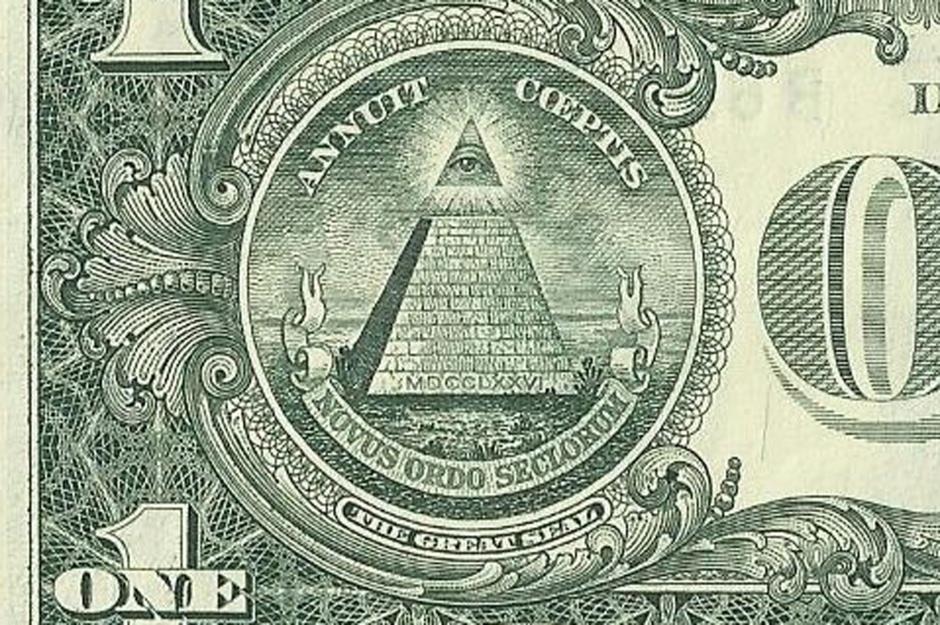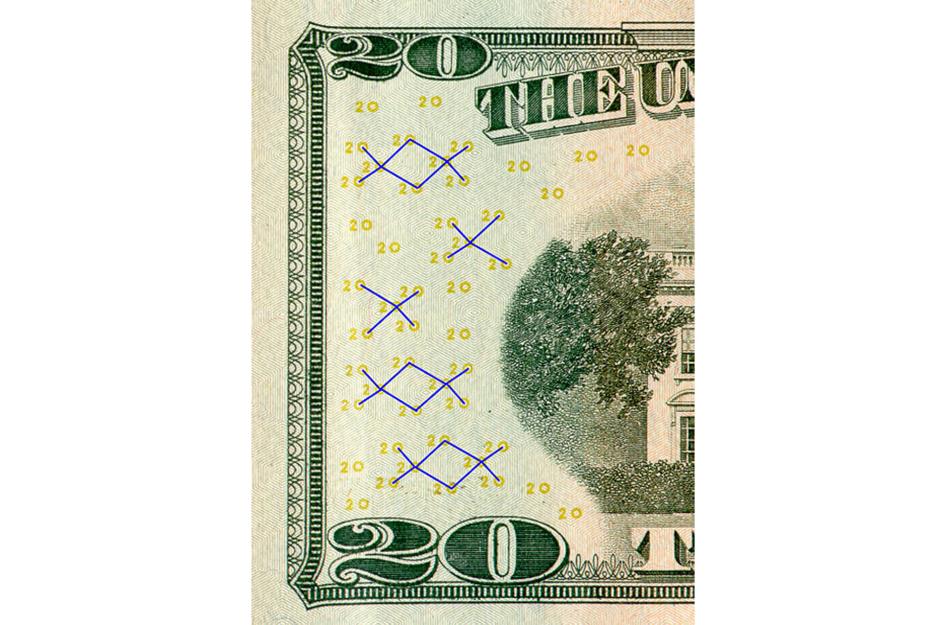Fascinating secrets our notes and coins are hiding
Hidden symbols and covert security features
The banknotes and coins we use are full of unique quirks and hidden security features to thwart the counterfeiters and prevent fraud. From the invisible code on the new British £1 coin to the arcane symbols on US dollar bills that conspiracy theorists can't seem to get enough of, we reveal the secrets hiding in our everyday money.
Various banknotes: EURion constellations
These mysterious rings appear in groups on countless banknotes, from US dollar bills to Saudi Riyals, and are used to help imaging software identify banknotes and block them from being printed by a color photocopier and counterfeited.
New British £1 coin: secret code
Dubbed 'the most secure coin in the world', the new 12-sided £1 coin is packed with sophisticated security features including an invisible binary code printed on the Queen's face that can only be detected by the Royal Mint's counterfeit coin machines.
US coins: six inscriptions
All US coins are required by law to bear six inscriptions: 'United States of America', 'Liberty', 'In God We Trust', 'E Pluribus Unam', the relevant date and denomination. E Pluribus Unam is Latin for 'out of many, one', and refers to the coming together of states to form a union.
US coins: mint marks
Wonder what the random letters on US coins refer to? They are marks denoting the mint in which the coin was produced. 'D' denotes the Denver mint, 'W' means the coin was minted in West Point, 'S' represents San Francisco and 'P' is the mark of the Philadelphia Mint, though some coins made in Philly bear no mint marks.
New Scottish £5 note: midges
The Royal Bank of Scotland worked with members of the public on the design of its new polymer £5 note, which entered circulation last year. If you look close enough, you'll be able to spot a tiny midge, Scotland's infamous insect, on the note. The new fiver also features a hidden cluster of the biting insects, which is only visible under UV light.
Canadian banknotes: laser trick
Canada's polymer banknotes rock a very cool hidden security feature. If you shine a laser pen through the maple leaf, the denomination value of the note can be seen projected on the opposite wall.
Polymer notes: record-playing trick
Even cooler, videos have emerged online of people playing vinyl records with polymer banknotes. The edges of the notes are relatively sharp and firm, and can get into the tiny grooves on vinyl records, creating sound much like a stylus needle.
US $1 bill: laurel leaves
Several bunches of laurel leaves are depicted on the front of the $1 bill, around the '1' figures and at the base of the image of George Washington. In Ancient Greece, laurel wreaths were awarded to victors and represent success. The bunches also feature a number of buds, symbolizing that America is young and yet to reach its full potential.
US $1 bill: pyramid
Created in 1782, the Great Seal of the United States appears on the $1 bill and the reverse side depicts an unfinished pyramid with 13 steps, which represent the original Thirteen Colonies. The pyramid itself signifies strength and durability.
US $1 bill: Roman numerals
If you've ever wondered what the Roman numerals at the base of the pyramid mean, they refer to the year 1776 when the Second Continental Congress declared independence from Britain and formed the United States of America.
US $1 bill: Eye of Providence
No, this isn't a creepy Illuminati symbol or the so-called Eye of Horus. Latched onto by conspiracy theorists, the Eye of Providence is actually a Christian motif representing the eye of God watching over humanity, or in this case the USA.
US $1 bill: Latin inscriptions
Conspiracy theorists have also homed in on the Latin mottos annuit cœptis (He favors our understanding) and novus ordo seclorum (new order of the ages), which they suggest point to the founding of a sinister New World Order. In fact, they simply refer to the new American era ushered in by the Declaration of Independence.
US $1 bill: bald eagle
The bald eagle, which represents freedom and America, holds 13 arrows in its left claw and 13 olive branches in its right, symbolizing war and peace. In heraldry, objects held in the right hand are of higher importance, meaning in this case that America will always favor peace over war but isn't afraid to defend itself when necessary.
US $5 bill: state names
If your eyesight is extra-sharp, you may just about be able to make out the names of the 26 states that appear on the Lincoln Memorial depicted on the reverse of the $5 bill. Mysteriously, South Carolina and New Hampshire are abbreviated to 'Carolina' and 'Hampshire' on the bill.
US $10 bill: hidden tens
The number 10 on the bottom left-hand corner on the obverse side of the $10 bill may look like it's covered in black lines. But on closer inspection, you'll notice the lines are actually tiny microprinted rows of the word 'ten', included to confound the counterfeiters.
Singapore $1,000 note: national anthem
Long-winded inscriptions appear on many currencies worldwide, but the Singapore Mint gets a special mention for hiding the lyrics of the city state's national anthem in plain sight on the back of the $1,000 note.
New Australian $5 note: flying bird
The award-winning new Aussie $5 note has plenty of state-of-the-art security features, but the most impressive has to be the flying bird illusion. When you move the note, the Eastern Spinebill on the back appears to flap its wings.
British coins: shield design
The Royal Mint's 1p, 2p, 5p, 10p, 20p and 50p coins can be arranged to reveal an esoteric shield design that mimics the coat of arms on the older £1 coin, which goes out of circulation in October. This clever feature was created by designer Matthew Dent in 2008.
Swiss 50 franc note: micro-perforations
The new Swiss 50 franc note features a perforated Swiss cross. These tiny holes are almost impossible to fake and, as a result, they are appearing on more banknotes, from the Israeli shekel to the Russian ruble.
Swiss 50 franc note: magic number
The new 50 franc note also features a 'magic number' 50 on the obverse side. The number only appears when it is tilted at a certain angle in the light. Like the micro-perforation technology, the use of this light-dependent security feature is becoming increasingly common on banknotes worldwide.

